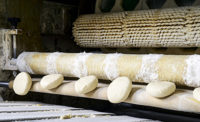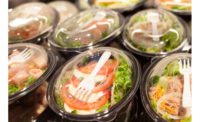Study: Advanced packaging equipment prompts growth in pet food packaging market
The pet food packaging market is dominated by the plastic segment accounting for 40.8% share in the overall market in 2017.

The global pet food packaging market was valued at $8.3 billion in 2017, and is anticipated to expand with 5.2% CAGR over the forecast period to reach $10.7 billion by 2022, according to analyses from Transparency Market Research, Albany, N.Y.
While prominent players are indulging in mergers and acquisitions and partnership, others are struggling to establish themselves in foreign soils. Additionally, most companies in the market are attempting to enhance customer loyalty by offering advanced product distribution and technologies.
The pet food packaging market is dominated by the plastic segment accounting for 40.8% share in the overall market in 2017. The segment is expected to expand with lucrative CAGR of 6.3% over the forecast period of 2017-2022. Based on the region, North America stood at $2,688.9 million in 2017, and is likely to expand with a CAGR of 5.2% to reach a valuation of $3,472.5 million over the forecast period. The European region is expected to account for the second-leading revenue valuation of $2,877.5 million by the end of the forecast period.
Growing pet adoption to influence market growth
The pet food packaging market is gaining traction due the growing adoption of a pet coupled with rising awareness about maintaining pet's health. The pet food packaging plays a crucial role in protecting pet food from moisture and oxygen. This boosts the implementation spill-proof and advanced pet food packaging to maintain and quality of pet food packaging.
Furthermore, rising concerns over pets’ nutritional intake is leading to a rise in the manufacturing of a variety of pet food sold in advanced materials.
Growing variety of pet food to boost market
Growing availability and enhanced distribution channel of pet food packaging is also boosting the pet food packaging market. In order to maintain these health factors, pet owners are buying these snacks in a large number, thereby driving demand for the pet food packaging market.
However, the growing implication of stringent regulations on the use of packaging material such as plastics coupled with regulations of the U.S. Food and Drug Administration (FDA) to maintain quality and hygiene is hampering the growth of the pet food packaging market.
Nonetheless, growing focus toward the low-fat and natural offerings provide opportunities for growth. Pet food manufacturers are trying to offer food in attractive, informative and advanced material. Further, availability and growing adoption of the lesser harmful and recyclable plastics such as PVC, PET and HDPE is predicated to offer opportunities for growth in the forthcoming years.
Looking for a reprint of this article?
From high-res PDFs to custom plaques, order your copy today!








